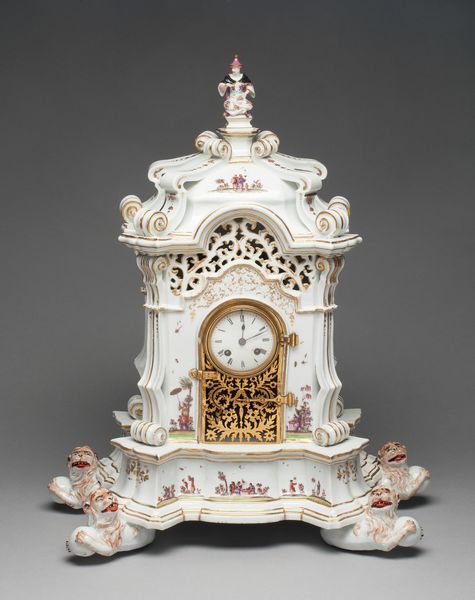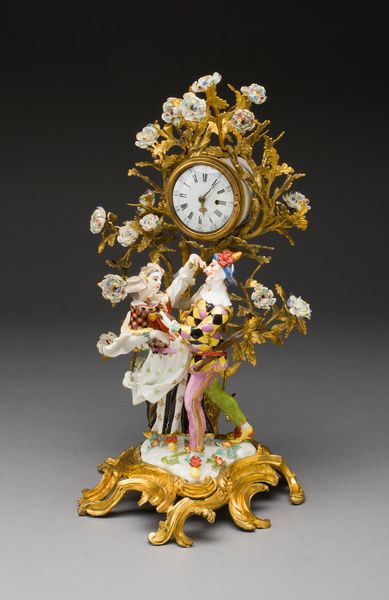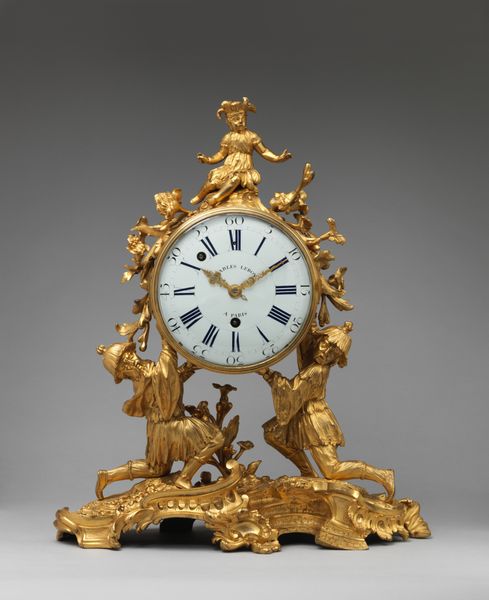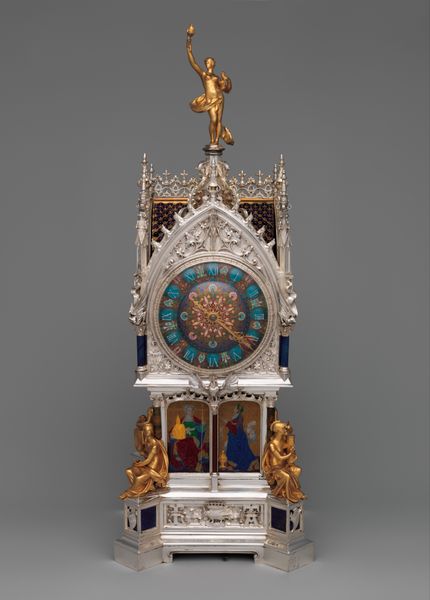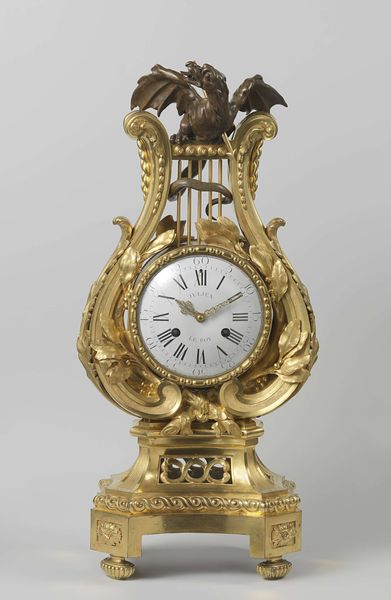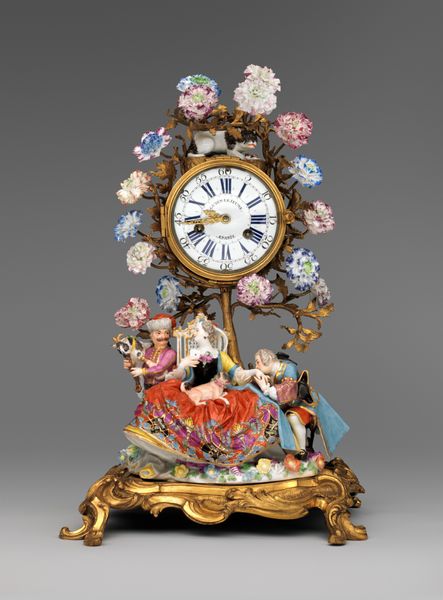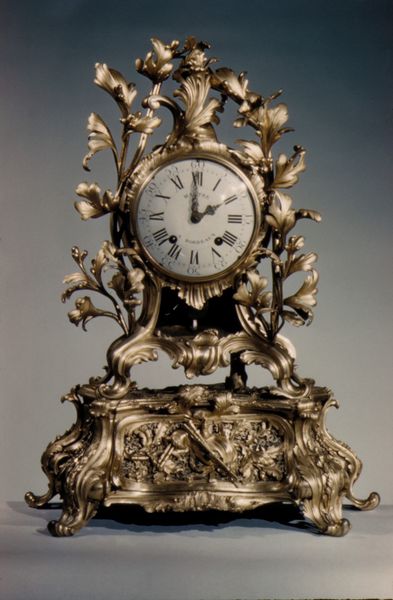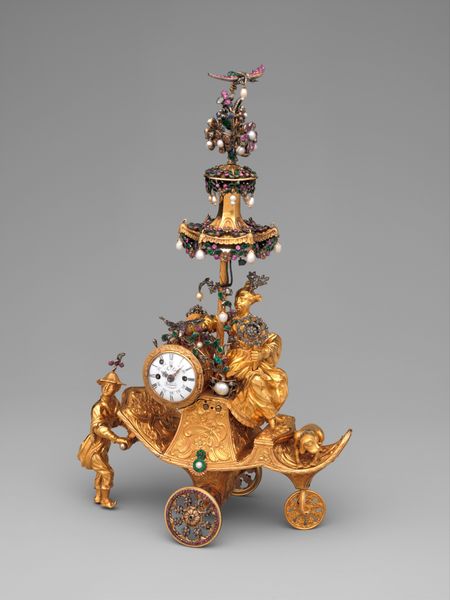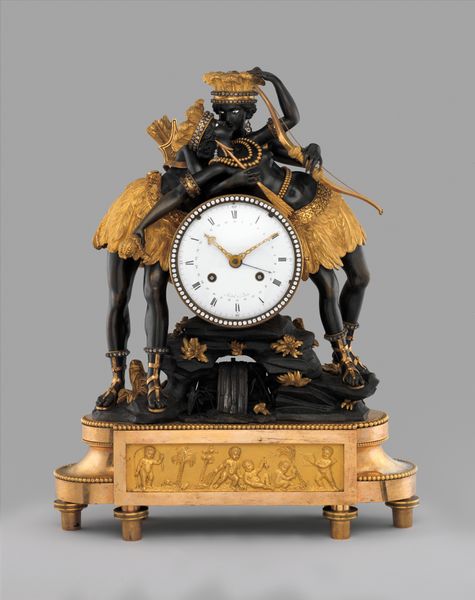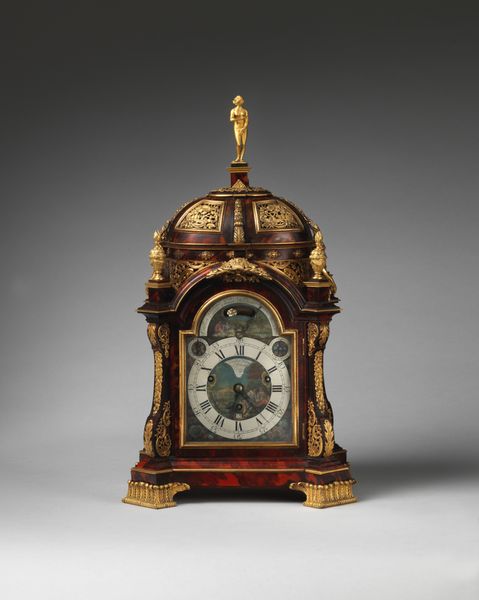
Dimensions: confirmed: 21 9/16 × 12 1/8 × 9 1/8 in. (54.8 × 30.8 × 23.2 cm)
Copyright: Public Domain
Curator: This ceramic clock case, dating from 1723 to 1855, was crafted by the Meissen Manufactory and is now housed here at the Metropolitan Museum. Editor: It strikes me as incredibly whimsical! The delicate porcelain, the cherubic figures…it's the very essence of Rococo. Curator: The Rococo style, with its ornate details and playful themes, certainly speaks to a specific cultural moment. The aristocracy’s fascination with leisure and beauty is reflected in pieces like this. Do you consider its original placement and the impact this art may have on certain people of the time? Editor: Undeniably. But what fascinates me are the formal qualities. Look at the craftsmanship, the way the artists modeled those figures. Notice also how the gilded details enhance the form and direct the eye, leading it from the base up to the eagle at the apex. Curator: The figures, indeed, speak volumes. These idealized cherubs might symbolize innocence, but their placement around a clock hints at something more complex, wouldn't you agree? The allegorical nature of the sculpture certainly had resonance in the context of eighteenth century elite. The work reflects the power dynamics and social relations present during that era. Editor: From a purely aesthetic perspective, however, consider the way light interacts with the porcelain’s surface, creating soft shadows and highlighting the subtle gradations of color. Its pure decorative refinement raises fascinating ideas about aesthetics and function. Curator: I believe that art serves as a cultural artifact. It invites discussions on labor, class, gender and societal expectations embedded within the structures. Who made it, how did their socioeconomic status influence it, and what was its reception among diverse groups of viewers? It definitely raises interesting and important issues. Editor: Agreed! Although the deeper, embedded historical perspectives can be seen. Appreciating it in both contexts enriches our understanding of the artifact itself, wouldn't you agree?
Comments
No comments
Be the first to comment and join the conversation on the ultimate creative platform.
